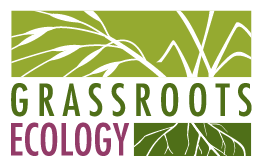Native Plant of the Month: Strawberry
About Strawberries
The Bay Area is home to two native strawberries: the beach strawberry (Fragaria chiloensis) and the woodland strawberry (F. vesca). These adaptable groundcovers spread via sprawling stems called runners and form dainty, white flowers in spring. Their deep green, three-part leaves turn red with age, creating a vibrant year-round display. Their fruits ripen in May or June and are an important part of local Native cuisines, including of the Muwekma Ohlone, Ramaytush Ohlone, Tamien Nation, and Amah Mutsun.
How to Grow Native Strawberries
Beach strawberry thrives in sunny locations with sandy soil, such as its natural coastal dune habitat or rain gardens filled with fast-draining soil.
Woodland strawberry is usually found in partly shaded woodland understories, but can tolerate morning sun. In contrast to beach strawberry, it grows in medium to slow-draining soils like clay.
The low, spreading form of strawberries makes them ideal for filling in empty spaces between and underneath taller plants like irises (Iris spp.), currants (Ribes spp.), and oaks (Quercus spp.). Together with species like self-heal (Prunella vulgaris) and sedges (Carex spp.), they can also be a fantastic lawn replacement that tolerates some foot traffic.
Where to Buy Strawberries and other Native Plants
Our nursery grows native plants using seeds and cuttings carefully sourced from local watersheds. Starting this month, strawberries and several other species are discounted! See our latest inventory here:
By Stanley Gu, Ecologist




